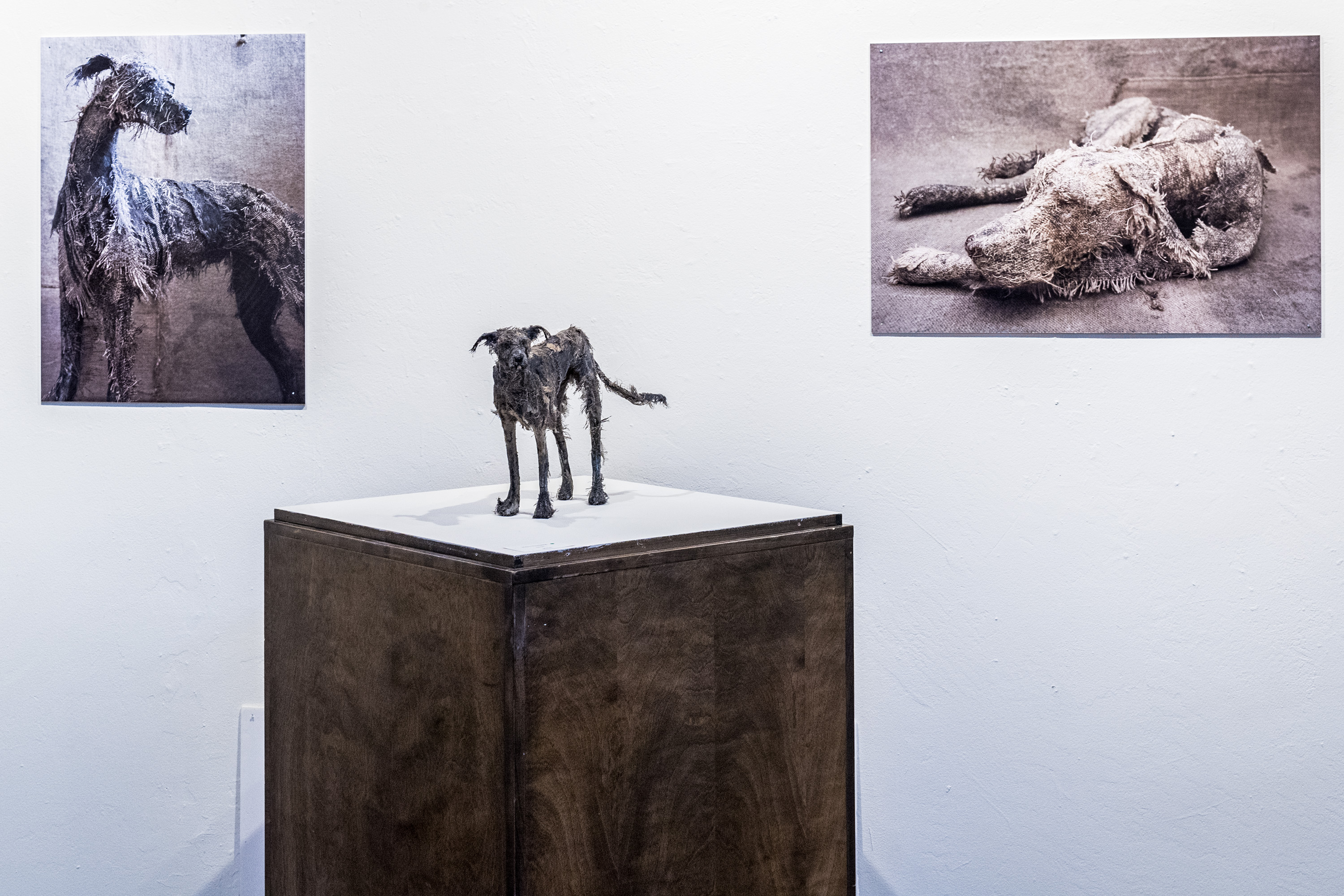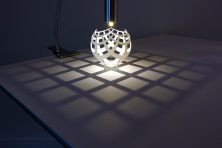Art School Exhibit An Ode to Man’s Best Friend
- Share
- Tweet
- Pin
- Share

It was 20th century American poet Ogden Nash who is credited with the oft-quoted phrase “the dog is man’s best friend” (the opening line of his 1941 poem, “An Introduction to Dogs”) but the bond between man and dog is one that has evolved over centuries.
From the early days of the mutually beneficial human-wolf relationship (with humans providing shelter and protection, and wolves helping to hunt) to modern day canine jobs as service dogs, therapy dogs, herding, and police dogs, the role of dogs in human life and happiness is one that cannot be understated.
The Peninsula School of Art honors this relationship with its final exhibit of 2017, Man’s Best Friend, showcasing the deep emotional connection between dog and man. Among those works is a sculpture created by UK-based artist Helen Thompson, inspired by the Slum Dogs of India photographs of Eloise Leyden.
Working in wire, paper and textiles, Thompson creates expressive dog sculptures that capture the physical and emotional essence of man’s best friend. She has done this under the artistic moniker “Holy Smoke” since 2011.
Check out Holy’s Smoke’s work alongside that of seven other artists at the Peninsula School of Art through Dec. 30.

A sculpture by UK-based artist Helen Thompson is among those paying tribute to canines in Peninsula School of Art’s new exhibit. Photo by Len Villano.
Alyssa Skiba (AS): Tell me about your journey to becoming an artist.
Helen Thompson (HT): I was born in Wales, UK and from an early age had a passion and a need to make and draw things. Paper and card were used initially and were soon combined with thread and textiles after my father taught me to sew from an early age. I studied sculpture completing a BA (Hon) Fine Art at Newcastle in the north of England and an MA Fine Art at the Royal College of Art, London. I work from my studio in Wales and exhibit both in the UK and internationally.
AS: Why did wire sculpting appeal to you?
HT: I have always enjoyed the simplicity and purity of drawing but naturally work three-dimensionally. Working with wire allowed me to draw in space. The neutral quality of the linen works like a blank page with the stitching being like a drawing line, bringing together my passion for drawing, sculpture and dogs.
AS: What inspired your dog sculptures?
HT: A particular photograph of a preserved hunting dog whose bandages fell off long ago (National Geographic article); a poignant and beautiful image inspired the texture and colour of the pieces.
AS: Why dogs?
HT: Dogs are a wonderful subject matter. The sheer diversity of shape, size and colour provide endless inspiration. They have such differing characters, expressive faces and innumerable postures. I find them endlessly fascinating.
AS: What is your creative process like?
HT: I always start with the head and then decide on the body posture and build a frame up accordingly. I work from photographs and sketches. Usually I have an idea of what sort of character/emotion I am trying to achieve, however, the faces and character seem to evolve naturally in the making process. A piece can take from a few days to several weeks depending on the size and style.
AS: Any dogs in particular that influence your work?
HT: My first dog Travis was a great inspiration to me. He was a big, black bear of a dog with a fantastic laid-back personality. My present dog Balzac is a Setter cross, a sensitive soul who likes to be a part of everything that’s going on. He is very expressive and makes a really good model.
AS: What’s behind your artist name, Holy Smoke?
HT: The name Holy Smoke came into mind several years ago whilst walking my first dog Travis. I didn’t know what I would use the name for but decided it would be the name I would use in the future. When I started working with wire I often burnt the finished pieces to blacken and age them, alongside the treadbare linen Holy Smoke seemed very appropriate! I like the juxtaposition of the two words, being both “good” and “bad.”


